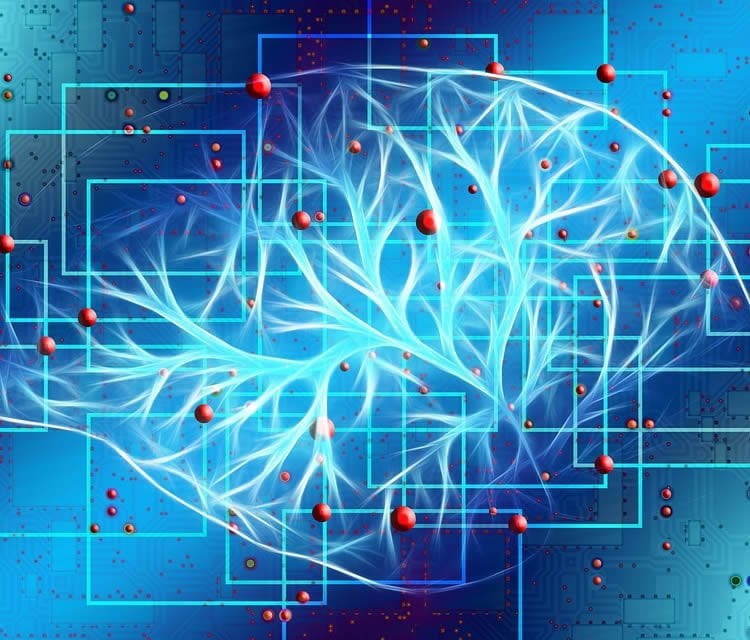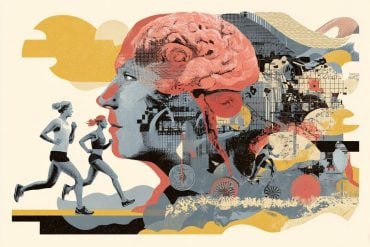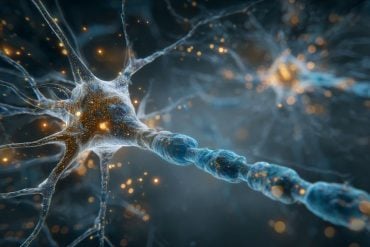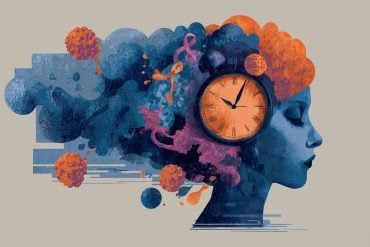Summary: A new EEG study reveals memory cues can influence the neural representation related to information about cued and non-cued locations, but the effect of the cue depends upon when it appears.
Source: Florida Atlantic University.
Many everyday tasks require people to represent and combine information from multiple sources. For example, when a person checks the rearview mirror while driving it is important that they maintain information about how far they are from the car in front of them. This information is stored in working memory, a limited-capacity system that allows humans to represent relevant information over short intervals. Information stored in working memory can be assigned different levels of importance. For instance, heavy traffic requires a person to maintain accurate representations of how far they are from other cars on the road. In addition, the relative importance of different sources of information might change at a moment’s notice, like if a car suddenly cuts a person off or if they hear a horn.
This kind of re-prioritization is a critical component of many simple tasks, yet very little is known about how the brain does this or how re-prioritizing information changes how the brain represents it, if at all.
In a study published in The Journal of Neuroscience, scientists from Florida Atlantic University examined questions about these cues by using electroencephalography (EEG) to track brain activity while participants performed a task that required them to hold a set of positions in working memory. On some trials, participants were shown a cue that predicted which remembered location they would be asked to report at the end of the trial, giving them strong incentive to prioritize that location over the non-cued location.
Results from the study show that cues can influence the neural representation of the cued and non-cued locations, but the effect of the cue depends on when it appears. When no cue was given, the neural representation of each location gradually decayed with time. When the cue appeared immediately after the memory display, the neural representation of the cued location remained strong and constant throughout the remaining storage interval, while the representation of the non-cued location was quickly washed away.
By using EEG to track the neural representations of each location, the researchers could see how those representations are influenced by the cues. They have demonstrated that the cues can have different effects on neural representations depending on when they’re presented, suggesting that the brain has several different mechanisms that it can use to help boost memory performance following a sudden change in the priority or relevance of a given piece of information.
“It’s been difficult to pinpoint exactly how the brain re-prioritizes information following changes in the environment, in part because earlier studies have relied on relatively slow measures of brain activity. The benefit of EEG is that we can track changes in brain activity on a scale of a few to tens of milliseconds – about an order of magnitude faster than other methods such as functional MRI,” said Edward Ester, Ph.D., lead author, an assistant professor in the Department of Psychology in FAU’s Charles E. Schmidt College of Science, and a member of the FAU Brain Institute. “Our findings suggest that the brain can use several different methods to re-prioritize mental representations depending on how long they’ve been stored. This would be difficult if not impossible to discover using methods with a slower temporal resolution.”

A key insight from the study was the pattern of results that were observed when the cue was presented mid-way through the storage interval. During the first half of the storage interval, the neural representation of each location decayed with time. However, this decay was partially reversed for the relevant location after the cue had been presented, suggesting that the brain was able to “boost” the representation of the now-relevant location to help facilitate memory.
“Working memory capacity is strongly correlated with a person’s intelligence,” said Asal Nouri, a student in FAU’s Graduate Neuroscience Training Program working in Ester’s lab, and a member of FAU’s Brain Institute, who co-authored the paper with Laura Rodriguez, a student in FAU’s neuroscience program. “Given that dysfunction in working memory is a major symptom in common psychiatric disorders such as schizophrenia and autism, it’s important that neuroscientists gain a true understanding of how it works.”
Source: Gisele Galoustian – Florida Atlantic University
Publisher: Organized by NeuroscienceNews.com.
Image Source: NeuroscienceNews.com image is in the public domain.
Original Research: Abstract for “Retrospective cues mitigate information loss in human cortex during working memory storage” by Edward F. Ester, Asal Nouri and Laura Rodriguez in Journal of Neuroscience. Published August 20 2018.
doi:10.1523/JNEUROSCI.1566-18.2018
[cbtabs][cbtab title=”MLA”]Florida Atlantic University”Past Memory Cues Help People Juggle Numerous Pieces of Information.” NeuroscienceNews. NeuroscienceNews, 8 September 2018.
<https://neurosciencenews.com/memory-information-juggling-9827/>.[/cbtab][cbtab title=”APA”]Florida Atlantic University(2018, September 8). Past Memory Cues Help People Juggle Numerous Pieces of Information. NeuroscienceNews. Retrieved September 8, 2018 from https://neurosciencenews.com/memory-information-juggling-9827/[/cbtab][cbtab title=”Chicago”]Florida Atlantic University”Past Memory Cues Help People Juggle Numerous Pieces of Information.” https://neurosciencenews.com/memory-information-juggling-9827/ (accessed September 8, 2018).[/cbtab][/cbtabs]
Abstract
Retrospective cues mitigate information loss in human cortex during working memory storage
Working memory (WM) enables the flexible representation of information over short intervals. It is well-established that WM performance can be enhanced by a retrospective cue presented during storage, yet the neural mechanisms responsible for this benefit are unclear. Here, we tested several explanations for retro-cue benefits by quantifying changes in spatial WM representations reconstructed from alpha-band (8-12 Hz) EEG activity recorded from human participants (both sexes) before and after presentation of a retrospective cue. This allowed us to track cue-related changes in WM representations with high temporal resolution (tens of milliseconds). Participants encoded the locations of two colored discs for subsequent report. During neutral trials an uninformative cue instructed participants to remember the locations of both discs across a blank delay, and we observed a monotonic decrease in the fidelity of reconstructed spatial WM representations with time. During valid trials a 100% reliable cue indicated the color of the disc participants would be probed to report. Critically, valid cues were presented immediately after termination of the encoding display (“valid early”, or VE trials) or midway through the delay period (“valid late” or VL trials). During VE trials the gradual loss of location-specific information observed during neutral trials was eliminated, while during VL trials it was partially reversed. Our findings suggest that retro-cues engage several different mechanisms that together serve to mitigate information loss during WM storage.
SIGNIFICANCE STATEMENT
Working memory (WM) performance can be improved by a cue presented during storage. This effect, termed a retrospective cue benefit, has been used to explore the limitations of attentional prioritization in WM. However, the mechanisms responsible for retrospective cue benefits are unclear. Here we tested several explanations for retrospective cue benefits by examining how they influence WM representations reconstructed from human EEG activity. This approach allowed us to visualize, quantify, and track the effects of retrospective cues with high temporal resolution (on the order of tens of milliseconds). We show that under different circumstances retrospective cues can both eliminate and even partially reverse information loss during WM storage, suggesting that retrospective cue benefits have manifold origins.






